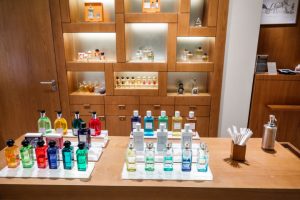One of the great paradoxes of our society is that, come crises, pandemics, wars or recessions, the luxury industry never stops growing. And analysts agree that the trend will continue, so much so that the Financial Times asked: “Will the extraordinary boom in luxury goods ever end?” According to Dominion Funds, “luxury spending grows at a faster rate than the economy.” But there is a new card on the table: climate and environmental sustainability. Can the planet afford the luxury of luxury? Can an industry based squarely on excess, exorbitance and exclusivity be sustainable?

It is worth stressing that the sustainability of luxury is not a problem exclusive to millionaires. According to experts Peter Wells (Cardiff University) and Anne Touboulic (University of Nottingham), the average citizen in a rich country like the UK has an ecological footprint of 6.7 hectares; if the entire world population enjoyed this standard of living, they say, we would need 3.7 planets. In the US, the carbon footprint of a high-income family is five times that of the poorest, and the average American has five times the carbon footprint of the average global citizen.
For the rich and famous, this consumption skyrockets: private jets, yachts, jewellery, sports cars, high fashion brands and, in general, a lifestyle that leaves a long environmental trail in its wake. According to Wells and Touboulic, a single private jet flight from a ski resort in Aspen, Colorado, to San Francisco emits 4.4 tonnes (t) of CO2, 2.75 times the emissions of a car in an entire year (1.6 t), or 60% of the average person’s annual carbon footprint (7.3 t).
An impact that is not just for the rich
So it is not surprising that climate activists denounce private jets and, more generally, the lifestyles of billionaires. Nor is it surprising that some climate denial organisations accuse stars of hypocrisy when they boast about their environmental values but, for example, have their vegan belt and shoes and flown from the US to Cannes, as actor Woody Harrelson reputedly did. Certain mass influencers, film or music idols, set themselves up as environmental champions, while at the same time being preferred customers of a market that does not seem to be aligned with such values.

But while the ecological footprint of jets and yachts may remain a symbol of the wealthiest among us, other sectors of the luxury industry are seeking to attract an affluent but increasingly aware consumer, and this is driving certain trends: among perfumers, who have traditionally built part of their brand value on packaging that is as luxurious as it is disposable, the option of refillable perfume bottles is spreading. The firm Thierry Mugler pioneered the concept in 1992, and brands such as Louis Vuitton, Guerlain, Armani and others have begun to follow suit.

What is the impact of these measures? Armani claims that refilling reduces the use of glass by 38%, metal by 67% and plastic by 20%, and that buying a 50ml spray bottle and a 150ml bottle to refill reduces the carbon footprint of that fragrance by 64%. As this is company data, it is difficult to verify, although it would seem logical to think that refilling a bottle of perfume once should halve the carbon footprint of the packaging. However, this trend is still in the minority: according to Premium Beauty News, data from market consultancy NPD indicates that refillable fragrances account for only 6% of sales in Europe, and refills for 1%, although there was a 31% increase in 2022 compared to the previous year.
Luxury and sustainability, hand in hand?
One black spot on the sustainability map is the fashion sector. Globally, the textile industry generates up to 10% of global emissions. Interestingly, according to a Spanish study by the universities ESIC, IE and Complutense de Madrid, “from a sustainability perspective, luxury brands are a model in the fashion industry.” The truth is that green initiatives are proliferating among these firms. Many have abandoned fur, and now seek recycled materials from beach flip-flops (Chloé) or fishing nets (Prada) and biomaterials, promote second-hand and “deadstock” materials, and collaborate with environmental organisations on ecosystem restoration or sustainable agricultural production.
Using the methodology of the UN’s Intergovernmental Panel on Climate Change, the Spanish study found that one key to sustainability for luxury companies is actually to sell more: while the carbon footprint increases as production rises, emissions begin to stagnate at a market share of 11-13%, producing less pollution per unit of product sold. In other words, there is an economy of scale of environmental effort. In particular, the study highlights the French multinational holding company LVMH (Moët Hennessy Louis Vuitton), which in recent years has incorporated the sustainability goals of the 2030 Agenda into its processes, as a model to follow: “LVHM is a conglomerate that has achieved the greatest efficiency in terms of CO2 emissions,” the authors write.

In short, faced with the notion that luxury and sustainability are incompatible, the industry is responding with visible and well-publicised offensives. And while experts warn that the risk of greenwashing is very real, the sector has no choice but to adapt to the times: according to the Spanish study, citing data from the consulting firm Deloitte, the younger, more aware generations now account for half of the luxury market. And for these consumers, saving the planet is not a luxury.
Comments on this publication